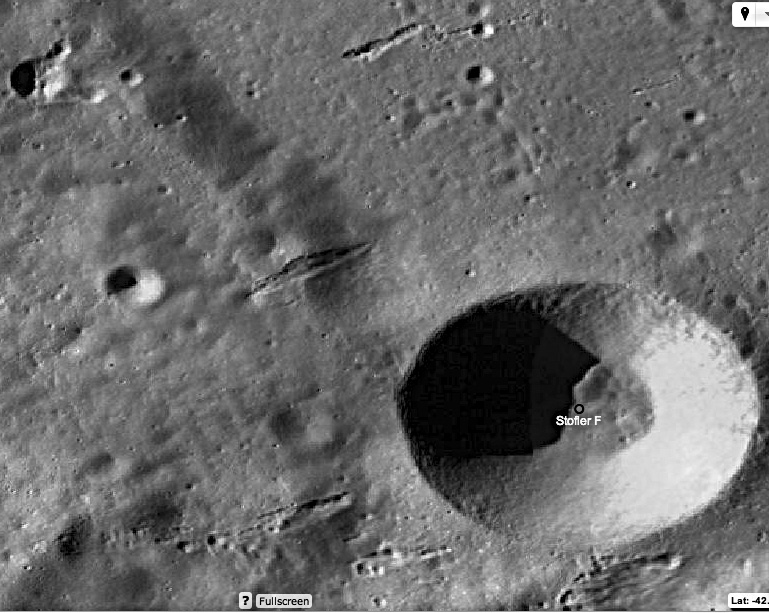August 19, 2013
Secondary Slit

image from " rel="nofollow LRO QuickMap (NASA/ASU)
Most of the craters on the Moon are secondaries. This is overwhelmingly true at small diameters (<2 km) and totally untrue at diameters greater than 30 km. Secondaries come in a multitude of shapes and sizes, with the closely spaced ones that appear as crater chains being especially interesting. Here, slashing through the lower rim of Stöfler is a remarkably shaped secondary feature unlike any I remember seeing before. If it occurred in isolation, and on a mare surface, it would be assumed to be a linear volcanic vent. But here, being roughly radial to Tycho and aligned with other traditional looking secondary chains, we must interpret it as a secondary feature, but not necessarily a crater chain. Secondary ejecta also makes valleys such as the famous " rel="nofollow Imbrium sculpture, but generally there is evidence that even sculpture linears are made of overlapping secondary craters. That is not so obviously true here. I wonder if this unusual morphology has to do with the 1 km drop in elevation between the feature's left and right ends? The reason for the elevation change is that the feature cuts the rim of Stöfler and a shallow crater just northwest of Stöfler F. It is somewhat similar to the two nearest secondary chains but seems more sharply defined. This slit feature must have been made by Tycho ejecta but its morphology is unusual for reasons I don't understand. Unfortunately, the Narrow Angle Camera " rel="nofollow images from LRO cover only part of the slit, and at an illumination too high to notice it. Hopefully, lower Sun NAC views will be acquired before the end of the LRO mission, providing more evidence on the nature of this secondary slit.
" rel="nofollow Chuck Wood
Related Links
21st Century Atlas chart 14.



